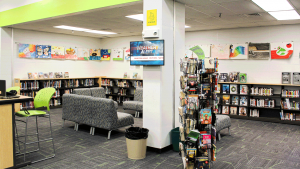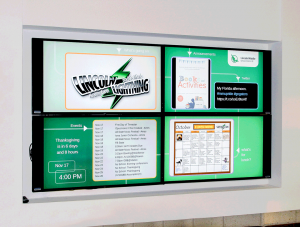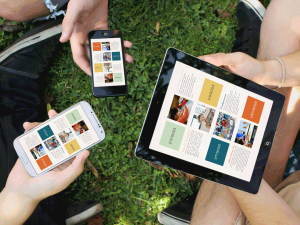It’s hard to stay focused and engage in school. Kids have a lot of energy, and today they have more distractions than ever before. Distractions are multiplied in remote learning environments, and educators are looking for tools to help keep them focused and engaged. Schools and universities are using digital signage software to create a more tailored approach to learning.
Hands on Learning
Sometimes the best way to get students engaged is to teach them a new task and let them use what they’ve learned. Digital signage software is used as a tool to help students design digital content, communicate with other students and instructors, and share information. Students learn how to integrate valuable and relevant tools like Google Sheets, AppSheet, Excel, and Google Meet. Instructors have full control over who can view and edit content, so there is no risk of inappropriate images or text. Students learn about a variety of use cases, like using digital signage for internal communications, healthcare, and advertising. Click here to learn about South Carolina’s inaugural digital signage course.
Accessible for Students
PWA (progressive web application) digital signage software makes content viewing and editing accessible for everyone, no matter what operating system or device they’re using. Students can complete work remotely, and instructors see changes in real time. All that is required is a stable internet connection and a device with a modern web browser. Students easily share digital signage content with friends and family by sending them a URL. Cloud based digital signage solutions make it possible for school districts and universities to scale digital signage across thousands of screens without insurmountable costs. Channel based pricing allows schools to display the same content across unlimited screens.
Improving Communication between Staff and Students
 Between course-work, extra curricular activities, and multiple overlapping schedules, it can be difficult to keep everything organized. School districts and universities are using digital signage as a tool to keep everyone up to date on events and closures. In cold-weather states, inclement weather often impacts classes and events. Digital signage software provides current road conditions and weather forecasts in addition to event updates.
Between course-work, extra curricular activities, and multiple overlapping schedules, it can be difficult to keep everything organized. School districts and universities are using digital signage as a tool to keep everyone up to date on events and closures. In cold-weather states, inclement weather often impacts classes and events. Digital signage software provides current road conditions and weather forecasts in addition to event updates.
Remote Learning
The usage of remote learning has increased greatly since the COVID 19 pandemic. Throughout the pandemic, school districts and colleges used digital signage software to continue learning when students and teachers couldn’t meet face to face. Chrome management gives schools and universities the ability to control and remotely manage devices to make sure students are on task, and that they get the information they need. Learn more about using digital signage for remote learning.
Accessible and Effective Tools for Learning
Educators are looking for tools to reach their students no matter where they are physically located. Even though most school districts and universities are holding traditional classes again, there is a growing need for remote education. Digital signage software gives educators the ability to reach students outside of the classroom. It also gives them greater creative control over how information is displayed. Allowing teachers to be more creative will lead to higher levels of student engagement.
Click here for ten ways to use digital signage for schools.



